Fibre Optic Cable
Your installations deserve the best. Shop our huge range of fibre optic cables to equip your customers with the latest in fibre optic technology. Choose the fibre type, mode, core count and colour you need, and we’ll cut it to the length you specify in our local Melbourne facility.
-
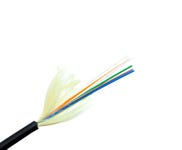 MSS Fibre 4 Core Singlemode Mil Tactical Indoor/Outdoor Riser Black PU Jacketed CableItem Number: CAB-IORM-04-SMPackaging Unit: 1 / MetreLoading price...
MSS Fibre 4 Core Singlemode Mil Tactical Indoor/Outdoor Riser Black PU Jacketed CableItem Number: CAB-IORM-04-SMPackaging Unit: 1 / MetreLoading price... $7.07
$7.07 -
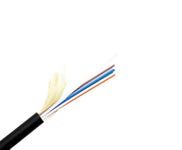 MSS Fibre 6 Core OM1 Mil Tactical Indoor/Outdoor Riser Black PU Jacketed CableItem Number: CAB-IORM-06-MMPackaging Unit: 1 / MetreLoading price...
MSS Fibre 6 Core OM1 Mil Tactical Indoor/Outdoor Riser Black PU Jacketed CableItem Number: CAB-IORM-06-MMPackaging Unit: 1 / MetreLoading price... $13.55
$13.55 -
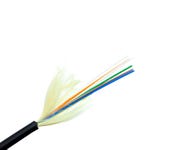 MSS Fibre 4 Core OM3 Mil Tactical Indoor/Outdoor Riser Black PU Jacketed CableItem Number: CAB-IORM-04-MM3Packaging Unit: 1 / MetreLoading price...
MSS Fibre 4 Core OM3 Mil Tactical Indoor/Outdoor Riser Black PU Jacketed CableItem Number: CAB-IORM-04-MM3Packaging Unit: 1 / MetreLoading price... $14.14
$14.14 -
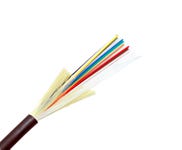 MSS Fibre 24 Core Singlemode Mil Tactical Indoor/Outdoor Riser Black PU Jacketed CableItem Number: CAB-IORM-24-SMPackaging Unit: 1 / MetreLoading price...
MSS Fibre 24 Core Singlemode Mil Tactical Indoor/Outdoor Riser Black PU Jacketed CableItem Number: CAB-IORM-24-SMPackaging Unit: 1 / MetreLoading price... $15.96
$15.96 -
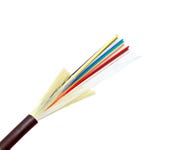 MSS Fibre 12 Core Singlemode Mil Tactical Indoor/Outdoor Riser Black PU Jacketed CableItem Number: CAB-IORM-12-SMPackaging Unit: 1 / MetreLoading price...
MSS Fibre 12 Core Singlemode Mil Tactical Indoor/Outdoor Riser Black PU Jacketed CableItem Number: CAB-IORM-12-SMPackaging Unit: 1 / MetreLoading price... $6.08
$6.08 -
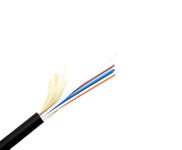 MSS Fibre 6 Core OM3 Mil Tactical Indoor/Outdoor Riser Black PU Jacketed CableItem Number: CAB-IORM-06-MM3Packaging Unit: 1 / MetreLoading price...
MSS Fibre 6 Core OM3 Mil Tactical Indoor/Outdoor Riser Black PU Jacketed CableItem Number: CAB-IORM-06-MM3Packaging Unit: 1 / MetreLoading price... $11.19
$11.19 -
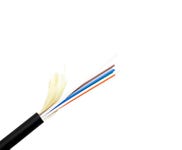 MSS Fibre 6 Core Singlemode Mil Tactical Indoor/Outdoor Riser Black PU Jacketed CableItem Number: CAB-IORM-06-SMPackaging Unit: 1 / MetreLoading price...
MSS Fibre 6 Core Singlemode Mil Tactical Indoor/Outdoor Riser Black PU Jacketed CableItem Number: CAB-IORM-06-SMPackaging Unit: 1 / MetreLoading price... $3.42
$3.42 -
 MSS Fibre 12 Core OM3 Mil Tactical Indoor/Outdoor Riser Black PU Jacketed CableItem Number: CAB-IORM-12-MM3Packaging Unit: 1 / MetreLoading price...
MSS Fibre 12 Core OM3 Mil Tactical Indoor/Outdoor Riser Black PU Jacketed CableItem Number: CAB-IORM-12-MM3Packaging Unit: 1 / MetreLoading price... $14.14
$14.14 -
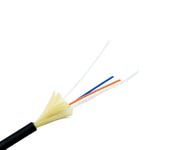 MSS Fibre 2 Core Singlemode Mil Tactical Indoor/Outdoor Riser Black PU Jacketed CableItem Number: CAB-IORM-02-SMPackaging Unit: 1 / MetreLoading price...
MSS Fibre 2 Core Singlemode Mil Tactical Indoor/Outdoor Riser Black PU Jacketed CableItem Number: CAB-IORM-02-SMPackaging Unit: 1 / MetreLoading price... $2.56
$2.56
Shop our Huge Range of Fibre Optic Cables
Fibre optic cables (also called optical fibre cables) transmit information as light pulses through flexible fibres composed of glass. Fibre is now a common option for data networks and telecom applications due to the high speeds for data transmission that fibre technology offers, particularly across long distances.
We supply cut-to-length and pre-terminated cables in a wide range of options, allowing our customers to choose the fibre construction, mode, core count and other customisations they require.
Find the Right Fibre Optic Cable
Our huge range of fibre optic cables cater for the needs of today’s modern communications networks, with an option for almost any environment across enterprise, defence, IoT, utilities, infrastructure, and other applications.
Indoor/Outdoor Riser (IOR) Cable
These RoHS-compliant multi-fibre Riser cables are constructed from 900um PVC tight buffered fibres, stranded together with “Dry-Block” water-swellable aramid blocking yarns. These cables are over sheathed with UV resistant, LSZH material making them suitable for both indoor and outdoor applications. Sheath printing includes length marking at 1-metre intervals. There are options for alternative colours and are available in any fibre type up to 48 fibres.
Loose Tube Cable
A termite resistant Loose Tube cable featuring a non-metallic strength member, gel filled tubes and a dry block core, for use in both direct bury and conduit/duct applications. The Thixotropic gel filled tubes and water swellable yarns (dry core) prevent water ingress while the non-metallic glass fibre reinforced plastic central strength member maintains excellent tensile strength. Our standard loose tube construction features an inner UV resistant Polyethylene (PE) sheath and an outer termite/UV resistant Polyamide Nylon jacket. Reduced diameter loose tube cables are also available which are ideal for restricted spaces and minimise conduits requirements.
Hybrid Loose Tube Cable
These cables have the same construction as the standard Loose Tube cables but contain two different types of fibre. Usually in a combination of Single-mode and multi-mode but can also consist of two different grades of Multi-mode. Different fibre types are contained in the different tubes.
Armoured Loose Tube Cable
Our Armoured Fibre Optic Loose Tube cables provide excellent protection against rodents and termites. We can supply with a Corrugated Steel Tape armour or GRP (non-metallic) armour. Loose Tube cables have gel-filled tubes and a dry block core, for use in both direct bury and conduit/duct applications. The Thixotropic gel filled tubes and water swellable yarns (dry core) prevent water ingress while the glass fibre reinforced plastic central strength member maintains excellent tensile strength. The loose tube construction features an outer termite/UV resistant Polyamide Nylon jacket for added protection.
Tactical Distribution Cable
Our Tactical Distribution Cables are Re-deployable and ideally suited to harsh environments such as outside broadcast, sporting events, industrial, mining and military. They have a Polyurethane outer sheath making them flexible, lightweight, and extremely durable. They are also flame retardant, UV resistant and water-blocked.
Tactical Break Out Cable
Our Tactical Breakout Cables are Re-deployable and ideally suited to harsh environments such as military, mining, and industrial. They have a Polyurethane outer sheath making them flexible, lightweight, and extremely durable. They are also flame retardant, UV resistant and water blocked.
Duplex Cable
Our Duplex cables are rugged and very reliable. They are available in a wide variety of fibre types and colours to suit a range of applications. Commonly used in patch cord construction or Fibre to the Desk (FTTD) applications. They have a LSZH outer sheath and are a two fibre Zip cord/Figure-8 construction making them easy to strip and connectorise.
Fire-Rated Cable
Our fire-rated fibre cables are suitable for both indoor and outdoor use. They are fire rated to IEC 60331–25 120 minutes at 750° Celsius max increase in attenuation 0.5dB. They are a Jelly-filled mono tube construction with a red LSZH outer sheath and protected with Mica tape and glass yarns.
Fibre Optic Cable Resources
If you require assistance selecting or ordering your Fibre Optic cable, we can help:
Related Articles
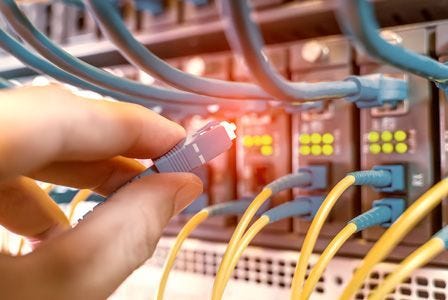
What is the difference between OS1 and OS2 Singlemode Optical Fibre?
This technical article delves into the differences between OS1 and OS2 Singlemode fibre optics, including their core characteristics, performance specifications, and ideal applications.

Should I use singlemode or multimode OM4 in a fibre network?
Single-mode fibre optic cable is typically used when longer distances or higher bandwidths are required in a network, while multimode fibre is suitable for shorter distances and lower bandwidths. This informative article will highlight some specific scenarios where single-mode fibre may be...

How do Fibre Optic Cables Transmit Data?
Nowadays, almost all internet providers deliver internet to your house through fibre optic cables instead of satellite or copper connections. Fibre optic cable transmits data using light instead of an electrical current.
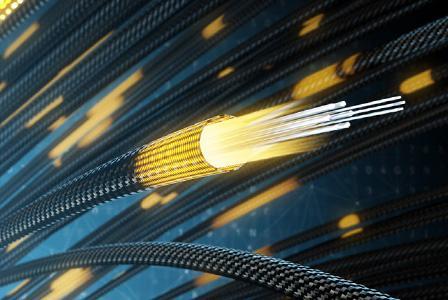
Fibre Optic Cable Buying Guide
Fibre optic cables (also called optical fibre cable) transmit information as light pulses through flexible fibres composed of glass. Fibre is now a common option for Ethernet networks and telecom applications due to its high speeds for data transmission across long distances.
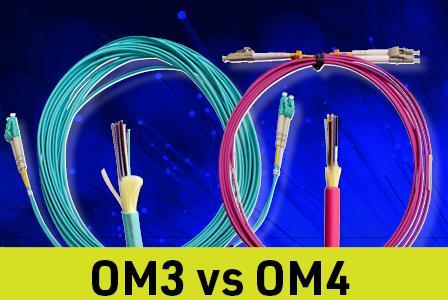
What’s the difference between OM3 and OM4 multimode fibre?
OM3 and OM4 multimode fibre are both widely used and both feature the same diameter core. So, what is the difference between these common types of fibre optic cable? This guide will outline what sets OM4 apart from OM3 and when you might choose one type of cable over the other.
Your ordered quantity for this item is more than what we have in stock.
Stock Availability
| Location | |
|---|---|
Please contact us to know more about this item's availability or possible restock dates.

